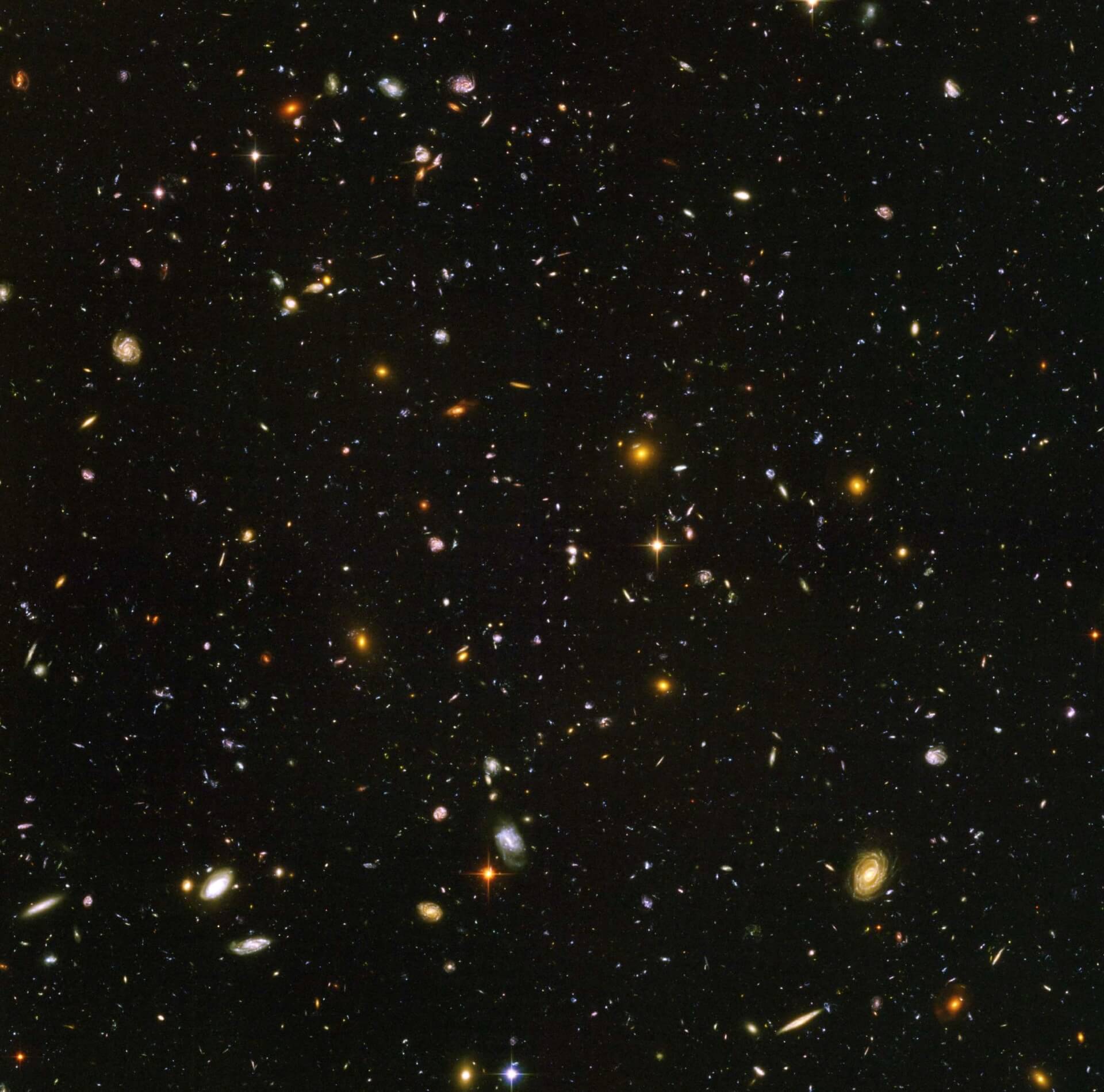The Hubble Ultra Deep Field. This view of nearly 10,000 galaxies is the deepest visible-light image of the cosmos. Credit: S. Beckwith & the HUDF Working Group (STScI), HST, ESA, NASA.
Understanding The Universe: That Huge Expanse Of Nothing
This is a long read, rigorous in content. It is about the Universe after all. It is more or less up-to-date with the latest discoveries and interpretations of space.
Launchpad
In our last article in the Science category, we delved into the small universe, specifically the cellular universe, which is as fascinating as the one that we are about to discuss. We met the ribosome, which we have described as the factory of life, and for good reason as outlined in that article.
Today, instead of zooming into the minute world, we are going to zoom out to what is beyond our dear planet Earth.
Our article today deals with a heavy-duty topic, the Universe, which is technical and can be complicated, but we will present it in an easy form. As stated on Wireminded homepage, our mission and our intention is to bring to our readers, in addition to light topics, complex subjects and put them forward in an easily understood format.
Let’s start.

Blastoff
For humans it can be easy to forget to think of what is beyond Earth.
Human civilization has become more complex. Life has become more challenging. For a person to live his/her life in this world with adequate achievement, he/she has to first go through years of education and career development, then settle down and prepare offspring to carry on the human legacy.
So, with all the burdens of his/her daily life, a person can be excused if he/she forgets to inquire about the Universe. But he/she should. We believe that it is a duty for us humans to keep thinking about and analyzing what is around us, because this is one of the most important traits we have.
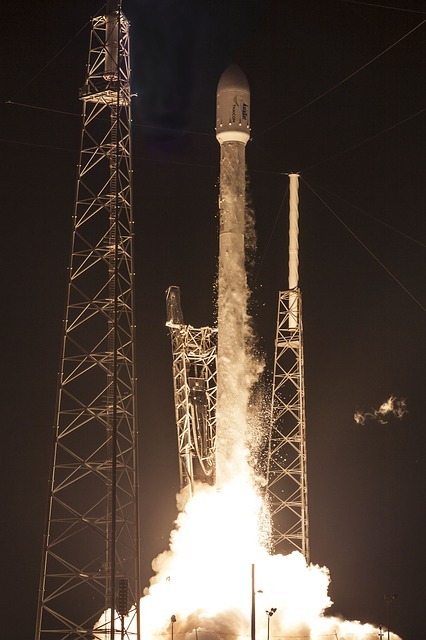
How will you measure me?
Earth is a planet like no other — so far. It has just the correct chemical elements and lies at just the proper distance from its star, the Sun, to allow the existence of living species.
Its distance to the Sun has been adopted as a unit of measurement for distances in space. It is 150 million kilometers (93 million miles) and it is called 1 Astronomical unit or 1 AU. Hence Earth lies at 1 AU from the Sun.
This is quite an immense distance but, to understand the Universe, not even the AU is enough and another unit of measure has to be used.
Let’s take an example. The nearest star to our Sun is Proxima Centauri. It lies 40,208,000,000,000 km away, i.e. 40.2 trillion km. To simplify it, we can say it is about 268,770 AU. The distance of Proxima Centauri to the Sun can now be easily visualized as being 268,770 times the distance of Earth from the Sun.

This is only the nearest star to the Sun. If we are to explore the Universe at large, the AU is still obviously not practical. Enter the light year and the parsec units of measure in space. The light year is the distance that light travels in a year. Speed of light is 300,000 km/sec. There are 60 seconds per minute, 60 minutes per hour, 24 hours per day and 365 days per year. That makes one light year equal 300,000 x 60 x 60 x 24 x 365 = 9,460,800,000,000 km. Therefore, Proxima Centauri is 4.25 light years (ly) away.
Simplifying the distance measures in space even more, we can use the parsec. Suffice it to say that 1 parsec equals 3.26 ly. So Proxima Centauri lies 4.25 ly away or 1.3 parsecs. The unit of light year is the preferred one, as it is easily visualized.
Now that we have clarified the unit of distance measure for space, we can start moving away from Earth and see what lies along the way.
My name is the Solar System and my mom is the Milky Way
The Sun belongs to the Milky Way galaxy. A galaxy is a large group of stars, gas and dust bound together by gravity. The Milky Way is disc-shaped and spiral, meaning it has arms wrapping partly around its center. The Sun and its solar system lie in the Orion spur.
There are 100+ billion stars in the Milky Way, and the Sun is just one of them, an average star at that. Our galaxy is immense in size, approx. 100,000 light years across. It takes the Sun 225 million years to make one orbit around the galaxy center.
Let’s put this into some perspective. The Sun was born 4.6 billion years ago. If it orbits the galactic center every 225 million years, this means that in its life so far it has made 20.4 orbits.
Another perspective is to research what happened on Earth 225 million years ago, which puts the Sun at the beginning of its last orbit around the Milky Way center. About 225 million years ago, Earth was going through the Triassic Period — between 252 and 201 million years ago. The Triassic is largely defined by extinctions and Earth had not seven continents but only one giant landmass: Pangea. The dinosaurs began their rule.
No one can tell what would happen at the end of the next orbit, 225 million years from now!
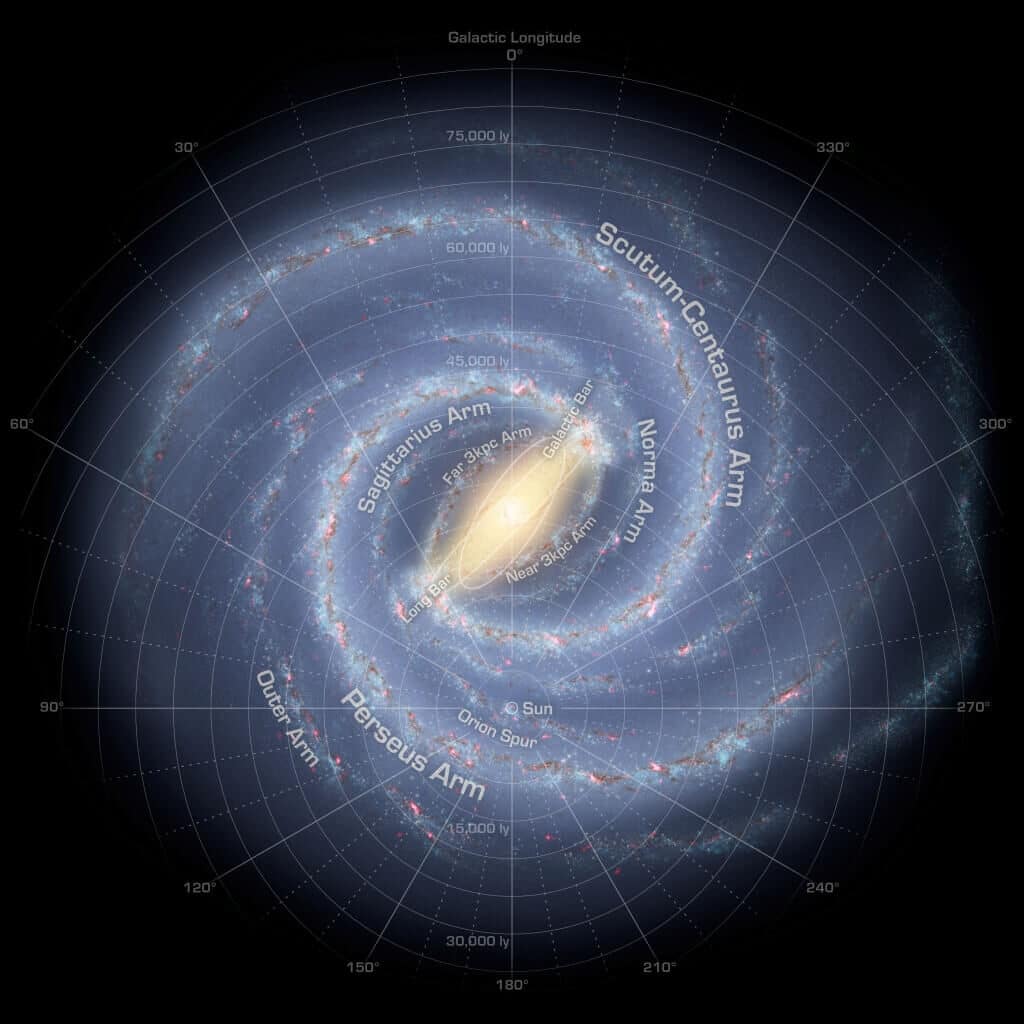
Credits: NASA/JPL-Caltech/R. Hurt (SSC/Caltech)
And my grandaddy is the Local Group
Just as the sun is one star in the Milky Way, the latter is one galaxy of an ensemble of about 40 galaxies or more, given the generic boring name of Local Group. If the diameter of the Milky Way is approx. 100,000 light years, the diameter of the Local Group of galaxies is 10 million light years.
So, the Local Group is a group of the galaxies in our neighborhood of space, bound and interacting together. Galaxy groups that contain a much larger number of galaxies, in the hundreds or thousands, are called clusters. And, believe it or not, these abound in the Universe. The most known and the nearest large cluster to our Local Group is the Virgo cluster, at a distance from us of 65 million light years and has about 2000 galaxies.
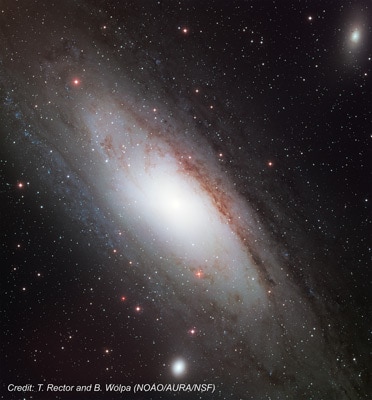
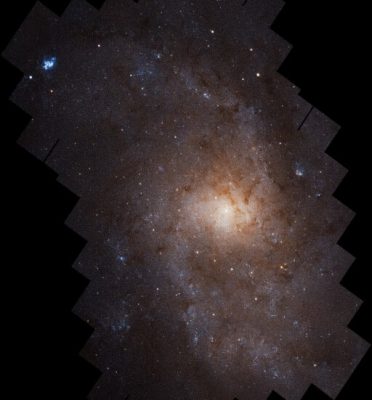
Superclusters… the monsters
Stars group together to form a galaxy and galaxies in turn interact with each other to form a group or a cluster. Does it end here? Is a cluster the largest of entities in space? Of course not!
Groups and clusters together form what is called a supercluster. The supercluster where our Milky Way resides is called the Virgo supercluster, so named because its main member is the Virgo cluster itself. The Virgo supercluster has about 100 groups and clusters, and has a diameter of 100 million light years, which makes it 10 times larger than our Local Group. However, in 2014 a new discovery has found that our grand Virgo supercluster is not so grand after all, as it was itself part of a 5-times larger supercluster called Laniakea, spanning 500 million light years.
To recap, our address in the Universe so far is:
- Earth is in the solar system of the Sun.
- the Sun is in the Milky Way galaxy.
- The Milky Way galaxy is in the Local Group of galaxies.
- The Local Group is in the Laniakea supercluster.
Does it end here? What do you think? Again, of course not! What bigger structures could there possibly be?
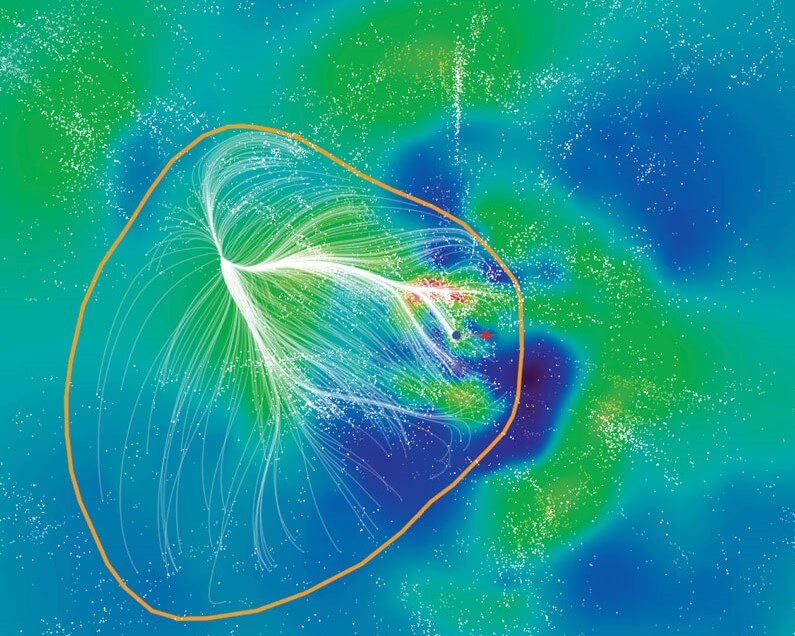
I am the structure of the Universe
Well, they are called filaments! And filaments are the most massive structures in the Universe. Surveys of distant objects reveal that the Universe has a bubbly structure — just like soap bubbles. Filaments of galaxies and clusters and superclusters form a web that encloses large voids. The large majority of galaxies form into clusters and superclusters mostly along these filaments.
An analogy to something we know may be in order. Visualize the countryside in darkness, with vehicles streaking along highways. Light from the vehicles’ headlamps define the highways and the area in between is obscure. Similarly, the galaxies in clusters and superclusters define the filaments, and the space in between is dark for lack of any significant presence of luminous galaxies. These obscure gaps are called voids.
That is what the Universe seems to be: a web of filaments surrounding voids.
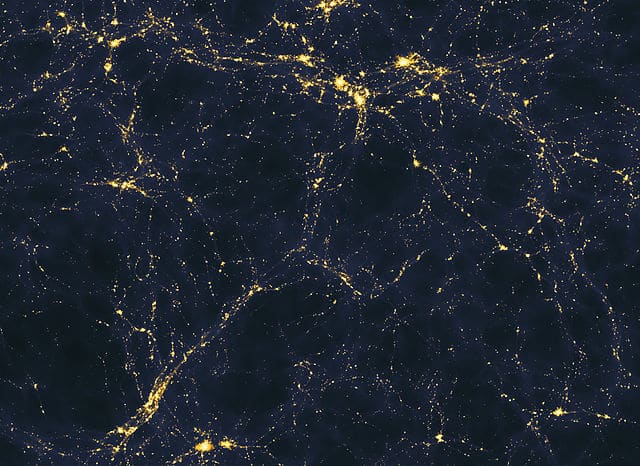
Gigantic segments of these filaments have been given names, the largest being the Hercules-Corona Borealis Great Wall, discovered in 2013, and it spans an unimaginable 10 billion light years. Another is the Sloan Great Wall, observed in 2003 and 1.5 billion light years in length. In 2020 a nearby structure has been identified, the South Pole Wall. It is in our backyard so to speak, and has a length of about 1.4 billion light years.
If by now you feel confused and overwhelmed, take heart that you are not alone. Even astronomers delving into the depths of space are dazed by the immensity and realities of it.
The superclusters and filaments seem to be only massive structures. Their components, which are the groups and clusters of galaxies, don’t seem to interact through gravity. On the other hand, a galaxy, a group of galaxies or a cluster of galaxies are all bound together by gravity and… something else.
Hold me tight
What keeps those stars bound together to form a galaxy and what holds those galaxies together to form a group or a cluster?
As you may know, anything that has mass also has gravity or a pull force. Objects with more mass have more gravity. It is a force that we know very well, because we experience it daily. If you jump, you will quickly come down, pulled by Earth. If you throw up a ball, eventually it will fall, again attracted by Earth.
So, to answer the question above, gravity between masses is one force in play. But there is something else involved that is to this day mysterious and still being researched.
You see, it is no longer gravitational pull alone that holds a galaxy or a cluster together. Observations have led scientists to start thinking that there is something invisible whose effect is real enough that its existence is suspected and now being researched.

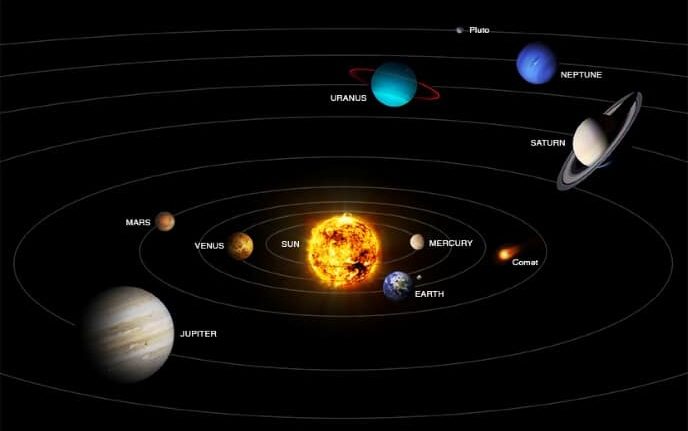
You cannot see me, so I am dark
The mass and gravity of the visible matter, like stars, gas clouds and dust cannot explain alone how a galaxy or a cluster is held together. That turns out to be only less than 5% of the mass required for that. Since the balance 95% cannot be seen, it was described as dark.
Two dark entities are being researched, dark matter and dark energy. Scientists have estimated that 27% of the Universe appears to be made of dark matter, and 68% of it seems to be made of a force that repels gravity known as dark energy.
Baffling? Absolutely. But we should not dwell on the dark entities much, as research is ongoing and explanations might change. Suffice to say that the dark entities have been proposed to explain how a galaxy or a cluster is held together —through dark matter — and how the Universe is expanding —effect of dark energy.
Is the Universe expanding? Balloon analogy
The Universe is expanding in a way that boggles the mind. To understand how it expands, we will use a balloon for analogy. You can refer to the image below for illustration.
Let us blow into the balloon and inflate it a bit. Using a marker pen, we will draw on its surface three dots, linear and at an equal distance of 5 cm. We will identify the topmost dot as dot1, the central one as dot2 and the lowermost as dot3. We will blow into the balloon again until it is fully inflated.
The dots are now more than 5 cm apart. They are still in the same spots on the surface of the balloon where we marked them with the pen, but it is obvious that the distance between them increased. This increase in distance is the result of the expanding plastic of the balloon.
And that is how you should think of an expanding Universe. The galaxies and clusters are moving away from each other through the expansion of the spacetime fabric.
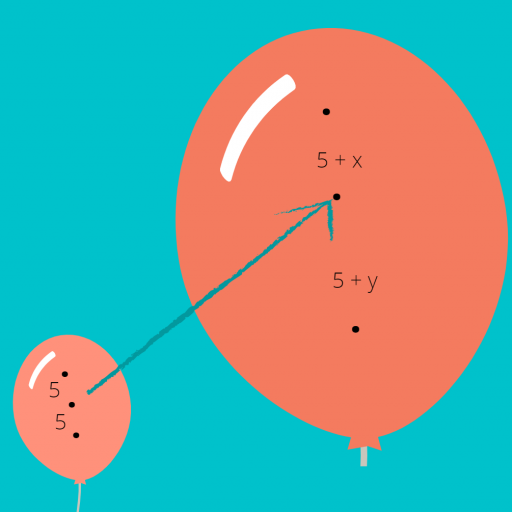
Moreover, say that after inflating the balloon fully, dot2 is now at a distance of (5 + x) cm from dot1, and dot3 is at (5 + y) cm from dot2. Consequently, dot3 is at a total distance of (5 + x + 5 + y) cm from dot1. So, while dot2 moved an extra distance of x from dot1, dot3 moved a larger distance of (x + y) relative to dot1. This simple experiment simulates how the farther an object in the Universe is away from Earth, the more it moves away.
To continue with the balloon analogy, let us say that it took us a second to inflate the balloon fully. So in one second, dot2 moved by an extra x cm from dot1 and in that same second, dot3 moved by an extra y cm from dot2. But dot3 moved by (x + y) cm in that second from dot1. To do that, it had to move faster than dot2 relative to dot1. So the speed of dot3 is more than the speed of dot2 relative to dot1. Consequently, for an observer on Earth (dot1), the farther object in space (dot3) moves away faster than a nearer object (dot2) and thus the universe expands at an accelerated rate with distance.
A mishmash of calculations
Edwin Hubble was the first astronomer to attempt to calculate those speeds in 1929. He came up with the Hubble constant that relates the radial speed of an object in space to its distance from Earth —the radial speed is the speed with which an object is moving away. The object, be it a galaxy or a cluster of galaxies, is not really speeding away, rather it is the space fabric itself between our telescope and that object that is expanding. Just keep this in mind whenever we mention in this article the speed of an object.
Currently, there are two competing calculations of the Hubble constant. One is the work of Planck, a European Space Agency telescope, that calculated it to be 67.4 kilometers per second per megaparsec (plus or minus 0.5). The other is the work of a team led by Adam Riess, an astrophysicist at Johns Hopkins University, who calculated the constant to be 74.03 kilometers per second per megaparsec (plus or minus 1.42).


Let us consider a galaxy at a distance from Earth of 10 megaparsec — 32.6 million light years. One calculation says the galaxy is moving away from Earth at a speed of 674 km/sec while the other says that it is 740 km/sec. For a galaxy that is twice as far, its speed would be twice as fast, that is either 1348 km/sec or 1480 km/sec.
This is true for any location in space, not just Earth.
Though it is called the Hubble constant, it may not be constant; research is ongoing to see how this measure varies with time and distance from Earth.
 Adam Riess
Adam Riess Saul Perlmutter
Saul Perlmutter Brian Schmidt
Brian Schmidt
Riess shared the 2011 Nobel Prize in Physics with Perlmutter and Schmidt for providing evidence that the expansion of the universe is accelerating. Creative Commons Attribution-Share Alike 3.0. Authors: Holger Motzkau, Markus Pössel
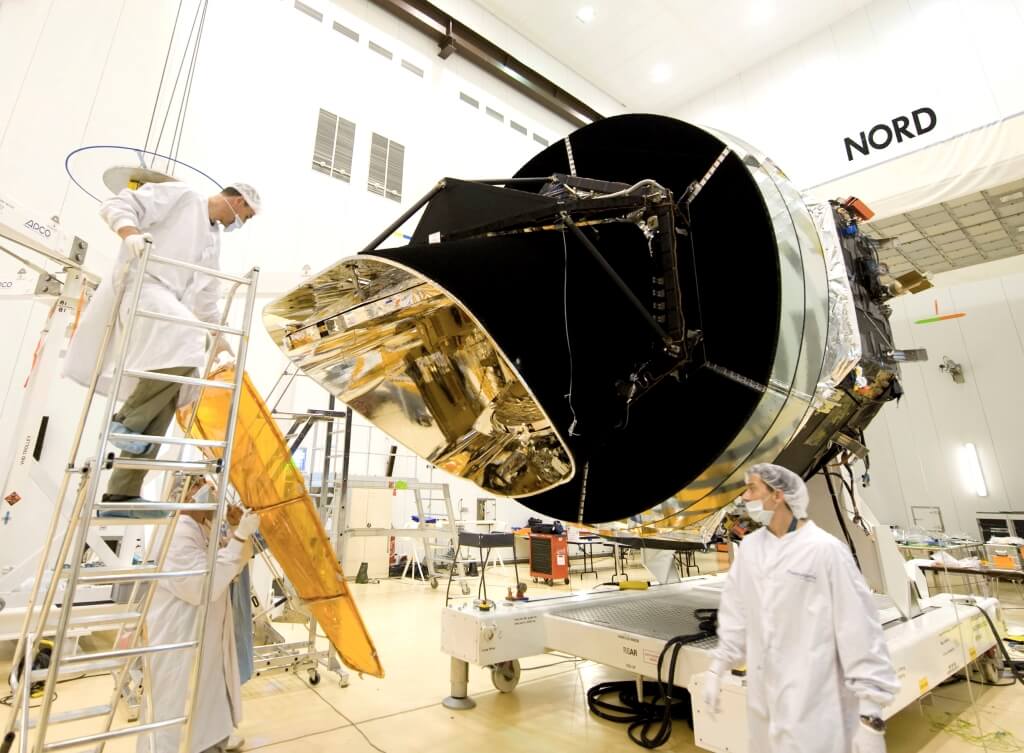
I am farther than you think
It has been determined by physicists and cosmologists that the age of the Universe is 13.8 billion years. Because we are talking about billions of years, and since the speed of light is finite at 300,000 km/sec — finite though still unimaginably fast — there arises a fact that is a bit difficult to wrap our mind around: that the farthest light we can now see —which defines the observable Universe —traveled to us over a duration of 13.8 billion years, but that the point that emitted this light 13.8 billion years ago is now at a distance calculated to be 46.1 billion light years from Earth. This distance is the radius of the observable Universe, which is an imaginary sphere around Earth that encompasses all that we can currently see.
So, how come?! Let us clarify.
Currently, the consensus among scientists is that our Universe came into being based on the Big Bang Theory. While this is not the only modern theory of how the Universe came into being, it is the most widely accepted and popular.
It states that the Universe with all its contents — matter and energy— began tiny and compact 13.8 billion years ago and spread energetically fast from that time on till our present day. In the time just after the Big Bang, the Universe was close-packed, extremely dense, very hot and opaque like a thick fog, with its contents of sub-atomic particles in a soup-like form, in a plasma state where no atoms can form. This small Universe continued expanding till eventually its prevalent temperature decreased enough to allow the first atoms to form after 380,000 years from the get-go. With atoms forming, photons of light got emitted. What is amazing is that these photons of light are still propagating in our current day. Scientists have discovered them and named that ancient light Cosmic Microwave Background — CMB.
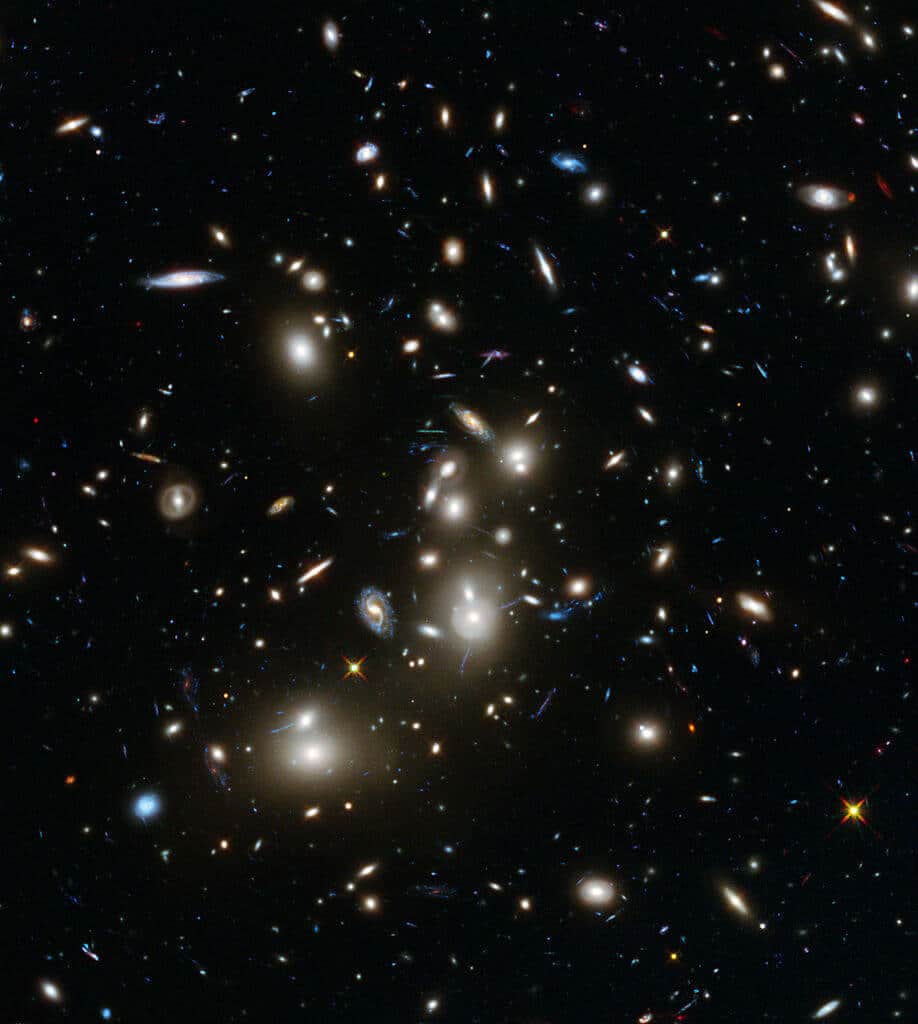
Galaxy clusters are the largest objects in the universe held together by gravity. This image is of the Abell 2744 galaxy cluster, at a distance of 3.98 billion light-years. This long-exposure Hubble Space Telescope image is the deepest ever made of any cluster of galaxies. The observation shows some of the faintest and youngest galaxies ever detected in space.
Abell 2744 appears in the foreground of this image. It contains several hundred galaxies as they looked 3.5 billion years ago. The immense gravity in Abell 2744 acts as a gravitational lens to warp space and brighten and magnify images of nearly 3,000 distant background galaxies.
The more distant galaxies appear as they did more than 12 billion years ago, not long after the big bang. Public domain, by NASA and ESA
Let us imagine four locations, A, B, C and D, that are linear in that compact Universe as soon as photons were emitted. We will assume that, after the Universe has expanded to our current day, point A happens to be where Earth is.
Photons were being emitted everywhere in the compact Universe, including from all the four locations, and in all directions. Some photons from B, C and D would travel toward A. If say we capture those old C photons on our telescope now, that means the light had been traveling for 13.8 billion years — it is actually 13.8 billion years minus 380,000 years which equals 13.79962 billion years, practically 13.8 billion years. Through our telescope on Earth, now at location A, we are currently seeing C as it was 13.8 billion years old, right when it was in that compact Universe. Its ancient light has just arrived at our telescope. And since space has been expanding all throughout this duration, C is now at a distance of 46.1 billion light years from us — location A. It is a distance not duration.
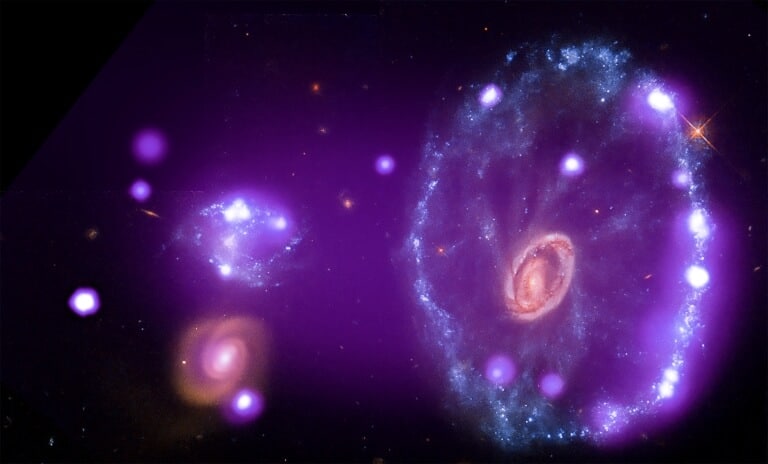
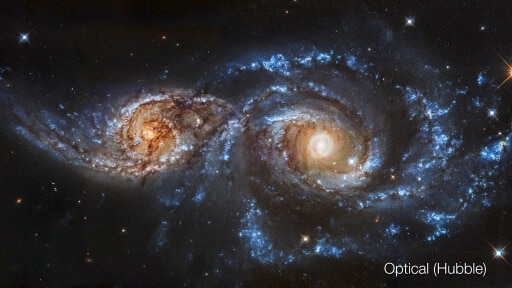
The photons from B, being closer to A than C, would have reached us already previously. Those of D, farther from A than C, would still be on their way to Earth. Whether they reach us or not, we will address it below. It is to be noted that at the time we received the first photons of C, hence appearing on our telescope for the first time, photons of B would have been streaming continuously by then, showing us successive photons arriving from B.
To help visualize this, upon seeing the words photons or light, ask yourself “are we referring to that old light emitted a long time back or the new light emitted at this very moment in our day.”
I am faster than you
At what distance from Earth will the speed of a galaxy be so great that its current new light cannot keep up with the expanding space and hence will never reach our telescope on Earth?
For that exercise, we will consider the mean of the two Hubble constant estimates already mentioned, 67.4 and 74.03, which is 70.71 km/sec per megaparsec.
We know that the speed of light is 300,000 km/sec. If at a distance of 1 megaparsec the speed of an object in space is 70.71 km/sec, then for a speed of 300,000 km/sec the distance should be 300,000/70.71 = 4,243 megaparsec — 13.8 billion light years or thereabouts.
At a distance larger than 13.8 billion light years from Earth, space expansion is so fast, more than the speed of light, that the new light currently emitted by a galaxy or cluster will never arrive at Earth. This new light will keep coming toward Earth but will not catch up.


I am not what you see
Light travels at 300,000 km/sec. Our distance to the Sun is 1 AU or 150 million km. That means it takes the photons of the Sun 8.3 minutes to reach Earth. It is fascinating that we are not seeing the Sun as it is right now, but as it was 8.3 min earlier.
Andromeda galaxy is a sister galaxy to the Milky Way and together they reside in the Local Group. It is 2.5 million light years away. So when we look at it through a telescope now, we are only seeing it as it was 2.5 million years ago.
To understand how captivating and thought-provoking this is, let us dwell a bit on what is happening and visualize it in reverse.
Suppose we have an alien friend living right now on a planet orbiting a star in Andromeda galaxy. So we are on Earth living our lives in 2021 AD at the same time that he is living his life on his planet in Andromeda. Earth is some 2.5 million years away from him. Also suppose that his civilization is technologically more advanced than us earthlings, hence he has access to more powerful telescopes that permit him to see Earth’s surface in great detail.

Light reflecting off Earth takes 2.5 million years to reach his telescope. So the light he is receiving now was reflected 2.5 million years ago. What is he going to see? He will see Earth as it was 2.5 million years ago, during the Pleistocene Epoch — the time period that spanned from 2.6 million years ago to 11,700 years ago. If our alien friend continues to scan with his telescope the surface of Earth with patience, he might notice living creatures roaming the land that is now Africa. He will see an Australopithecus aethiopicus going about. To see us as we are now, he will have to be patient and wait another 2.5 million years. So do not waste your time waving at him!
When we look through a telescope, we are really looking into the past. Nothing we observe is in its current state. We see only how it was in the past.
I am stronger than you
Space is expanding and a cluster of galaxies moves away from us at a speed that is dependent on its distance to Earth. But this does not apply to objects that are gravitationally bound together.
The galaxies in our Local Group are not speeding away from Earth because the Milky Way is bound to them through gravity. In fact, our neighbor Andromeda galaxy is coming closer on a collision course that might happen billions of years from now. However, for an observer in a distant galaxy outside the Local Group— not gravitationally bound to it—the Local Group will be speeding away from him.
Conclusion
As you see, the topic of cosmology is as fascinating as any subject can get, because it relates to us humans on the grandest of scales. It is mysterious and mind-boggling. It is the greatest of challenges to understand.
I hope I got you hooked to it as much as I am.
